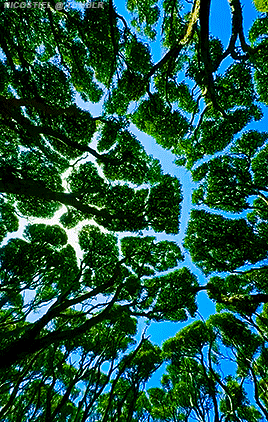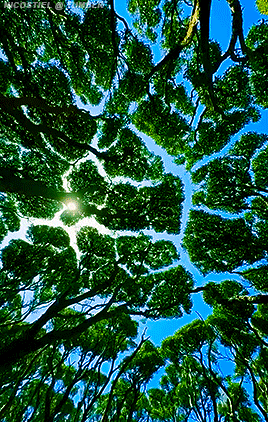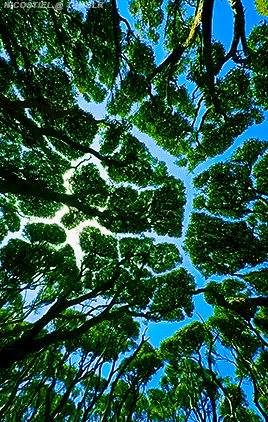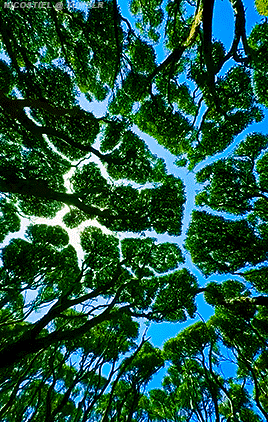chocolatenitesonfire
51 posts
Latest Posts by chocolatenitesonfire
May the next version of your life feel like a deep breath.


“We are surrounded on all sides by the stars.” An introduction to astronomy. 1868.




Rata Forest in New Zealand




it tastes so good for the ink of my story to come back home






You’ve returned to yourself before. You can do it again.

Upstairs

River Shroud - William H. Hays
American, b. 1956 -
Colour linocut on wove paper, 11. x. 14. in. 28. x. 35.5 cm.

"Sarabande - Our New All American Winner." Success with roses : the star rose magazine for rose lovers everywhere. 1959.
Internet Archive

Say it with me:
I apologize to myself, and I forgive myself, for ever accepting less than I deserve.

Afternoon light shining through the spring forest.
Yamagata, Japan.

HIYA.
So a lot has gone on in the last little bit. NASA recently was ordered to scrub their site of women's contributions to astronomy and astrophysics, even took down their page celebrating women's history month and all the contributions they've made to NASA. So I did a thing and crawled through the wayback machine to find some articles, and decided to put this right here because fuck the government, fuck the orange in charge who told them to scrub their site, and fuck NASA for throwing their people under the bus and bowing to this authoritarian nonsense. This version of the site still has articles on some important figures like Eileen Collins, the first woman to command a space shuttle, and ISS chief scientist Jennifer Buchli and chief deputy scientist Meghan Everett, who, in their words, "-provide the science strategy and make science recommendations for the International Space Station program, and help make sure all of the science on the International Space Station goes smoothly, from preparing for launch to conducting research on the space station with the scientists and astronauts and returning the science to Earth."
Nakshatras and their Shakti pt 1


What is Shakti?
Shakti translates to power in english , in the abode of stars each nakshatra is a blessed with a power that's inherent to them , the power in this sector can be channeled as a divine guiding force for a beautiful fruitful life . Check for your moon , sun and your Atmakraka ( planet in the highest degree ) .
Like , reblogs and comments are highly appreciated. Dm me if you wanna book an astrology or a tarot reading .
I will make a part two if this post reaches enough hehe

Ashwini
Shidravyapani Shakti
Power to quickly attain ones motives or wishes , this applies in the sector of motivation and manifestation, Ashwini starts off as the sign with the most healing abilities guided by the Ashwin twins, being in the Ashwini Nakshatra your thoughts manifest being it good or bad , one has to practice discernment to thoroughly gain from this shakti , go for all the things that excite you and feel your true desires as the start of attaining something is to belive it's already yours. One in this Nakshatra can attain health and let go of disease just by commanding it feeling it. Residing in the mantra realm of Akarshan.
Bharani
Apabharani shakti
Power to take something away , let go of something one has . Bharani as in Atharvaveda is considered as the last nakshatra , as the nakshatra of letting go of the body. One in this Nakshatra holds the power to take things that they want for themselves as well as letting go of what they don't want, this commands as an equal force of give and take a say a power in both the sectors , in Ashwini one could see the power to attain but in Bharani one has the power to let go , let go of disease , poverty , negative thinking .
Krittika
Dahana shakti
The act of burning and purifying , in hinduism fire is considered as an element of purification being it in a yagya or after death rituals, krittika with this shakti acts a Phoenix, this shakti gives krittika natives the power to destroy themselves to purify themselves, reaching the depths of their soul or rock bottom to rise above it , it's getting closer to ones rebirth . A very easy ritual for krittika natives is to write what they wanna let go of and burn it so that the fires may take away your pain, a prayer to the fire liberates . This shakti also gives you the power to bring change in the lives of the people around you , like the very strict teacher who ultimately leads to the growth of a student.
Rohini
Rohana shakti
The power of creation and the gift of fertility. After krittika burns and purifies Rohini makes the land fertile for growth. This shakti bestows the native a power of creativity and bringing their imagination to life , this is the first nakshatra of control as you're the creatrix , this Nakshatra gives the native the art and knowledge of saving and combining things and an eye for the bigger picture the patience the abilities that a perfect thing takes to develop . Masters of the process .
Mrigashira
Prinana shakti
The shakti of satisfaction and fulfillment. Mrigashira is not always the nakshatra of search its also the nakshatra of finding what one was searching . This shakti gives the native to be fulfilled in whatever endeavour they choose , they also bring a sense of fulfillment in other people's lives , to me mrigashira is a balance of the masculine and feminine the form of Ardhanareshwar . They can do anything cause they embody the ultimate fulfillment in themselves .
Ardra
Yatna Shakti
Yatna stands for effort , trial , this shakti is vast and diverse but what one requires is effort , if the native let's go of laziness one can find almost a meditative form of process to victory . The native has to just start and things fall in the right place . It's like a tortured victory but a victory is a victory the nature doesn't forget the process, it remembers , it remembers the form of Rudra in rage fighting for what belongs to one , the native inspires other people a spirit of fighting for rightes and gaining through the effort .
Punarvasu
Vastutva prapana shakti
The power to gain objectives and wealth , punrvasu is the rehabilitation after the tortured gain of ardra , vastytva prapana shakti bestows the native the power and the knowledge to gain what they want in life through their knowledgeable efforts . The natives act as the people who show people how simple being and positive vibration can attract so much in ones life .They can easily attract wealth and materials in their life . The native manifests through embodiment and vision boards .
Pushya
Brahmavarchava shakti
The power to harness creative spiritual energy . In Rohini we saw the start of creativity , in Pushya one harnesses it through themselves and the nature . Pushya is reiki energy , a pushya native enters the room and gives out their energy. They can easily create through their wishes , one of the fastest power in manifestation . The native becomes a beacon of light and nourishment to the people around them.
Ashlesha
Ashleshana shakti
The power to inflict poison and destroy . It's no secret that ashlesha is the most seductive nakshtra , this power bestows the native to destroy the enemy by the virtue of their presence and words no weapons are required they're a friend to a friend and the worst enemy to a enemy, a silent weapon of mystery and power . The natives are like Apsara Tillotama who made Sund and Upasund who killed themselves for her . A process of slow destruction is done by them to the enemy .

Thank you so much for reading 🎀💗
Easy remedies for each planet 💕


Sun : literally stand in the sun , wear gold, talk to your dad nicely , don't people please , bathe with sun water , take your own decisions .
Moon : regulate your emotions by talking about it , look at the moon ,drink moon water , talk to the moon
Mercury : study , wear green eat green things, take care of your skin , talk and play with young boys and spend time with them
Venus : focus on living life aesthetically, romanticise each activity, make each thing a luxury an experience, groom yourself, incline to creativity and spend time with young girls talk to them and their dolls
Jupiter : Respect your gurus , meditate , pray , wear yellow , have confidence and focus on what you want
Saturn: think you own nothing and nothing owns you , live as simply as you can , respect everyone , eat simple dress simple work hard on what you want .
Mars : go hit the gym , do some physical activity, listen to your body and its needs , wear red , fast on Tuesday , just walk keep walking
Astrology Observations pt 2: Ketu Nakshatra

Ketu natives struggle with attaching and relating to others from a young age. They are more observers than willing participants, showing little interest in faking emotions to make others feel comfortable or match the energy in a room. People tend to notice the detached behavior of Ketuvians and may judge them for it. Consequently, Ketu individuals may feel pressured to fake emotions. For Ashwini, there is a greater effort to fit into societal norms than for Magha and Mula. Ashwini is a Deva Gana (divine) nakshatra, making them appear more grounded and approachable. In fact, they often possess a mystic aura that leaves people astonished rather than intimidated—unlike Magha and Mula, both of which belong to the Rakshasa Gana (demonic). Magha and Mula can come across as aggressive, potentially alienating others they have more of an intimidating but pulling energy. However, Ashwini’s efforts to “fit in” are often unsuccessful. Striving to meet societal expectations can cause more harm to the Ashwini native, leading them to suppress their feelings. This suppression sometimes results in self-destructive behaviors, as Ashwini individuals feel like they are constantly hiding their true selves. All three Ketu nakshatras—Ashwini, Magha, and Mula—are quite rebellious, refusing to conform to expectations. In fact, they may deliberately disappoint others to challenge the emotional attachment to success or failure. I recall a memory of myself competing in a local festival competition, where I was winning. My family was cheering and hyping me up, but for some reason, this made me uncomfortable as it felt egoistic. So, I gave up on purpose and let the other child win, feeling happier doing so. My family was disappointed, but I didn’t care. I use to also walk away during social gatherings not to purposely be rude or anything but I felt the need to return to myself and when I would flash a smile people seemed to be uncomfortable. (I’ve read somewhere that ashwini smile can be creepy because it’s falsely exaggerated)
• Ketuvians have a natural inclination towards spirituality due to their detachment from material matters. This detachment allows them to deeply face and sit with their inner selves, often leading to a sense of emotional distance from their surroundings. For Ketu natives, expecting anything in return is rarely a priority. However, this sense of detachment creates a void within them, leading them to unconsciously drain both material and spiritual energy from others in an attempt to fill it. In the end, this process provides little fulfillment for them, yet the act of draining itself brings them a sense of pleasure, rather than the material rewards they seek. I would recommend that people with Ketu influence engage in a creative hobby. Creativity comes naturally to them, as it is not influenced by expectations of rewards or fear of judgment. Ketuvians thrive when they create because it serves as the most authentic form of self-expression.
• A physical trait I’ve observed among people with Ketu nakshatra is not just their sleepy, penetrating gaze but also their very thick, dark, wild hair. Among all the 3 naks, their hair stands out—thick, long, and bushy, often seeming to have a mind of its own. Their hair is typically on the darker side, very full, almost as if you could get lost in it. It often appears unkempt, as though they haven’t brushed it or just rolled out of bed. However, there are moments when their hair is styled, and that specific hairstyle becomes synonymous with the Ketu native. For example, Mula ☽—Amy Winehouse—is well-known for her messy, vintage updo. Ashwini ☉,—Magha ↑—Conan O’Brien has a signature hairstyle, his wild, iconic hair often referenced as a significant part of his brand, with people constantly mentioning it. Ashwini ☽—Pamela Anderson—popularized her famous messy bun, which many struggle to recreate. Lastly, Magha ☽—Aaliyah—with her signature side-swoop that covered her right eye became so popular and mysterious that false rumors spread, suggesting she was concealing a glass eye.



• You’ll find that many Ketu natives are involved in niche forms of media and alternative subcultures such as goth, punk, and grunge. They are drawn to styles that often include silver chains, black clothing, distressed fabrics, and DIY fashion pieces they design themselves, reflecting anti-establishment attitudes. In fact, you can observe a strong presence of musicians within these subcultures who have Ketu nakshatras. Notable examples include Lydia Lunch (Ashwini ☽), Robert Smith of The Cure (Ashwini ☉,), Nick Cave (Magha ☽), Joe Strummer (Magha ☉, and ☽), and Paul Simonon (Mula ☽) of The Clash. Other influential figures include Layne Staley of Alice In Chains (Magha ☉,), Jim Reid (Mula ☉,) of The Jesus and Mary Chain, Iggy Pop (Ashwini ☉,), Lou Reed (Magha ☽), and Penelope Houston (Mula ☉,) of The Avengers, as well as Tom Waits (Mula ↑).
(In my research, I also noted the presence of Mercury nakshatras within these subcultures, along with Krittika nakshatra. This tracks well, in my opinion, as these nakshatras are often rebellious, individualistic, and intensely creative.)
• A consistent romantic or close platonic pairing I’ve noticed among Ketu nakshatras is with Mercury nakshatras. Mercury and Ketu nakshatras sit at the Gandanta point, where the water signs transition into fire signs a point of spiritual transformation and awakening. These nakshatras seem naturally drawn to each other, but their interactions are often karmic and toxic. However, both individuals learn significant lessons from these relationships. Interestingly, it’s typically the Mercury nakshatra that initiates and drives the relationship. The Mercury native teases and provokes the Ketu native to get a reaction, but the Ketu person doesn’t give in easily. A personal anecdotal of mine, I was friends with an Ashlesha woman when I was outpatient at a mental institute, she was dating a Magha man She would do risky things, like experimenting with taboo drugs or even stealing from him, just to push his boundaries. At first, he didn’t react much, but over time he started to secretly enjoy her rebellion. Eventually, he joined her in taking drugs, and they even engaged in ménage à trois. Things escalated until she became pregnant, and both developed a drug addiction. Interestingly, their relationship grew stronger before it began to deteriorate. She made efforts to get clean, but he continued using. Despite this, he remained an active and supportive father. However, every time he returned to her life, she would relapse, so they eventually broke up. Both went to rehab, and their lives took different yet positive turns. She pursued higher education and earned a bachelor’s degree, while he began doing voluntary counseling for kids struggling with addiction. They are now great co-parents. Ketu nakshatras are also frequently seen dating Venus nakshatras or moving within their social circles. Typically, Venus nakshatras stick to other Venus nakshatras because of their elitism, but they occasionally connect with Ketu nakshatras and sometimes even Sun nakshatras. Ketu is the most raw primal self and Venus is the refined accumulation, @venusiastro has a great post about it in much depth here.
Notes on ashwini native


Taylour Paige - Ashwini ☽
Jaime King - Ashwini ☉
• Ashwini Nakshatra’s deities, the Ashvini Kumaras, are described in Vedic texts as twin gods who ride a golden chariot. They are the Physicians of the Gods, renowned for their powerful healing abilities, including rejuvenation, making the old young again, and even bringing the dead back to life. It is said that the Ashvini Kumaras were highly skilled in Ayurveda, the original system of healing, and that they revived Sage Dadhichi. Because of this connection, natives of this nakshatra often possess a youthful appearance that carries into old age. Their faces tend to retain a childlike quality, even with wrinkles, giving them an ageless charm. This childlike quality, however, can lead others to judge them as naïve. In fact, the Ashvini Kumaras themselves were not taken seriously because of their youthful demeanor, and many assumed they were incapable due to their playful attitude. Similarly, Ashwini natives often feel the need to prove themselves to others despite their incredible talents and capabilities.
•Ashwini is always on the go and dislikes staying in one place for too long. They are the type to embark on road trips or even live without a permanent home, as they have a deep fear of feeling trapped. This restless nature is connected to their affinity with transportation and traveling, not only in the material sense but also between different realms or planes of existence. In the material world, Ashwini natives are often drawn to motorcycles or horses—like cowboys or members of motor gangs—because these symbolize freedom and movement. They prefer to be freeloaders on their own journey but often enjoy traveling with a companion, as their deity is a pair of twin brothers. Ashwini’s primary symbol is the “horse’s head,” representing strength, movement, freedom, and endurance. This nakshatra is driven by a constant urge for movement, both physically and spiritually.
•Ashwini natives struggle to stay still or be patient. Because of their restless nature, they often leave tasks or projects unfinished, constantly seeking excitement in something new—until that excitement burns out. They are highly independent and confident in their skills and abilities, which makes them resistant to being told what to do. Their stubbornness often leads them to ignore others, even pretending those people don’t exist. This is an inherently rebellious nakshatra. As children, Ashwini natives were purposefully defiant—sneaking out or running away, sometimes with no apparent reason other than to experience the thrill of it. Personally, I’ve found myself in situations, like sitting in class or walking home, imagining what it would be like to leave my life behind—and nearly acting on it. When Ashwini natives mature, they become more intuitive and insightful about the correct path to follow. However, those who haven’t evolved yet often act recklessly, doing whatever they please without truly understanding their actions. While Ashwini natives may not always finish tasks, they never give up easily. This nakshatra is incredibly resourceful. Despite a lack of discipline, Ashwini natives possess endurance and resilience. Once they master discipline, they can achieve anything they set their minds to.
• Ashwini natives are highly sensitive and easily overstimulated, with minds that are constantly racing. The symbol of the horse’s head conveys sensitivity, alertness, and an ever-present readiness. Ashwini is the first nakshatra within Aries, which, in Vedic texts, represents the head of Kala Purusha (the eternal being). The head is central to all bodily functions as it houses the brain—a concept made somewhat ironic by Ketu’s association with being headless. This connection emphasizes Ashwini’s mental impulses, making it a highly impulsive nakshatra. Ashwini natives also make excellent leaders. The Sun (Surya), associated with leadership, is exalted at its highest point in this nakshatra. In numerology, the Sun is represented by the number 1, while Ashwini is the first nakshatra. Vedic texts describe Surya as constantly moving and rising on a chariot drawn by seven horses. This ties directly to Ashwini’s symbol of a chariot and the number 7, which is ruled by Ketu. Horses, an animal associated with Ashwini, are emotionally intelligent yet fidgety and restless—traits reflected in Ashwini natives. Horses are also known for their stamina, abilities, and speed, which connect to Ashwini’s shakti or power: “to attain things quickly.” This nakshatra is the fastest among all nakshatras, and as a result, Ashwini natives are often blunt, direct, and quick to get to the point. They dislike long-winded conversations and can become irritated when others fail to communicate efficiently. Ashwini individuals are fast thinkers, quick talkers, and even quick runners. For instance, I remember racing all the boys in my elementary school during recess—and winning.
•Ashwini natives are deeply compassionate towards animals. Many individuals with this nakshatra (myself included) have a natural affinity for caring for animals, especially strays. They often take in sick or injured strays and nurse them back to health, Even the most aggressive animals eventually warm up to their kindness and care.
•You cannot tame Ashwini. They are like wild horses—sensitive yet aggressive and cautious. As I mentioned before, they deeply value their independence, which is one of the driving forces behind their highly individualistic nature. Ashwini natives often feel as though they stand out from others, and they sometimes sense that they possess unique talents. This is true, as Ashwini tends to have a pioneering attitude and spirit. This nakshatra is strongly connected to the original creative spark, as Vedic texts associate it with Ketu’s primordial creative potential. However, this creative energy is so intense and overwhelming that it can be difficult to harness and control—much like Ashwini natives themselves. One of the weaknesses of this nakshatra is its tendency to act on impulse, attempting extraordinary things without proper evaluation. However, when Ashwini natives learn to slow down and approach their ideas with more consideration, they become true pioneers. Ashwini natives often emerge as inventors or “the first” to achieve something, and people frequently look to them for answers. However, their journey is not without challenges, as they often have to prove themselves. Others may feel the need to humble Ashwini natives, perhaps because of their boldness and confidence.
•Ashwini natives lifestyle choices often resemble those of hippies. They may live in a van or other transport vehicles, no stable job, embracing a free-spirited, go-with-the-flow attitude (often accompanied by a love for marijuana).They tend to eat vegan, have an interest in herbs, and maintain a very laid-back demeanor. Ashwini natives can also be deeply involved in activism and politics, often emerging as powerful political leaders. However, their intensity can lead to making a significant social impact, whether for better or worse, as they are willing to go to any lengths to achieve their goals. (For example, consider Malcolm X, who had an Ashwini ☽, or Hitler, who had an Ashwini ☉.)
•Ashwini natives can be tricksters, often playing with illusions. This trait ties to their deities’ story, where ancient texts recount how Indra warned Dadhichi not to teach the Kumaras Brahma-Vidya (the knowledge of creation), as their occupation placed them outside that realm. Indra threatened to cut off Dadhichi’s head if he disobeyed. When Dadhichi shared this with the Kumaras, they devised a clever plan. Using their incredible skill, they removed Dadhichi’s head and replaced it with a horse’s head. After Indra eventually cut off the horse head, the Kumaras restored Dadhichi’s original human head.
•I’ve observed that Ashwini natives have bright, radiant eyes, regardless of their color. It’s as if the sun is reflecting in its most powerful and raw form. This nakshatra is associated with the Ashvins, the gods of the dawn, and their eyes resemble the striking ambience of the dawn sky.


• Red and black are Ashwini’s theme colors (the nakshatra color is blood red). Whether it’s red lipstick or clothing paired with dark hair and darker garments or red, this color palette complements them beautifully.


•Ashwini natives, with their strong Ketu influence, have the innate ability to detach from the physical world, which allows them to transcend boundaries and connect with higher spiritual realms. This detachment gives them the ability to enter and exit their body at will, a key trait that allows them to access profound healing abilities, both spiritual and medical. Their intuitive healing is often centered around a deep connection to the etheric and energetic bodies, allowing them to sense and manipulate energy in ways that others cannot. This spiritual detachment also grants them heightened clairsentient (feeling) and clairaudient (hearing) abilities. They may receive intuitive messages or insights through their senses, such as hearing things others do not or feeling the emotions and energies of those around them. These abilities make Ashwini natives highly sensitive to their surroundings, but they must learn how to refine and discipline these gifts to fully harness their potential. Without proper self-control, their sensitivity can become overwhelming or scattered. In order to master their abilities, Ashwini natives need to engage in spiritual practice, which helps them ground themselves and refine their intuition. Through meditation, self-reflection, and healing practices, they can learn to navigate their advanced perceptive skills. This discipline will also enhance their capacity for self-healing, as they can better understand their own energetic blockages and clear them.
Notes on Magha natives


Eva Green - Ashwini ☽ Magha ↑
Wyntor Gordon - Magha ☉, Mula ☽
• Magha is deeply connected to Pitra Loka, the realm of ancestors, which ties the nakshatra to the afterlife and ancestral guidance. This connection imbues Magha natives with a sense of respect for their heritage, tradition, and the spiritual wisdom passed down from generations before them. The symbolism of Magha often revolves around endings, death, and mourning, reflecting the process of transformation that occurs after death, both in the physical world and spiritually. Magha natives are not only influenced by the idea of death but are also tasked with channeling the energy of their Pitris (ancestors), who are seen in Vedic texts as protectors and nurturers of humanity. The elder energy associated with Magha comes from this ancestral connection, giving natives a wisdom that feels ancient and timeless. This is reflected in their aesthetic choices—vintage clothing, gothic aesthetics, and worn-out pieces, often oversized, especially suits. This style can reflect the idea of both embracing the past and holding onto something that endures beyond time. Their look may carry a sense of nostalgia or reverence for history, much like their reverence for their ancestors. Additionally, sunglasses are an intriguing detail in the styling of Magha natives. Since the eyes are ruled by the Sun, Magha’s co-ruler, and Ketu deals with what’s hidden, sunglasses serve as a way to shield the eyes from direct visibility. This style element not only creates a sense of intrigue but also connects to their desire to maintain a sense of privacy or inner world Interestingly, I’ve also noticed Ashwini natives embracing sunglasses, which might be due to their own connection to Ketu , Sun and the desire for some form of distance or protection.




•Magha natives are indeed eccentric,(it is a nodal nakshatra after all) The Ketu rulership and Their connection to the Sun imbues them with a strong sense of purpose, often manifesting in a unique and unconventional personality. They are deeply drawn to exploring and expressing their individuality, sometimes in ways that challenge or defy societal expectations. This can make them appear mysterious or intriguing to others, as they seem to balance their rebelliousness with a deep respect for tradition and responsibility. Their ability to maintain a strong sense of duty, while also pursuing their own path, creates a dynamic where they seem both grounded and unpredictable, operating outside the conventional norms.
• Magha natives are also psychically sensitive, often experiencing prophetic dreams or gaining insight from the deep unconscious. Their ability to tap into these deeper realms allows them to perceive information that others may miss, sometimes giving them glimpses of the future or hidden truths. They are aware of their sensitivity and may even cultivate it, allowing their intuition to guide them in their life decisions. In contrast, Mula and Ashwini natives may not always be as aware of their own psychic abilities.
•While Magha is a Ketu nakshatra, and Ketu is inherently separative—disassociating from the material world—Magha itself is quite active in the material realm. This paradox exists because Magha is a dutiful nakshatra, deeply tied to social responsibilities, status, and the preservation of tradition. Magha natives often feel a sense of duty towards their community or heritage, and they take their responsibilities seriously, striving to uphold their legacy and make their mark in the material world. However, Magha’s rebellious streak—inherited from Ketu—emerges in its challenge to authority and conventional structures. While they engage in the material world, they are not easily controlled by external forces or expectations. Their rebellious nature often manifests in their refusal to conform to authority, whether it’s societal norms, hierarchical systems, or traditional rules. This makes Magha both deeply connected to the world around them and simultaneously disconnected from its oppressive forces.
• Magha natives often feel a deep connection to the past, and this is reflected in their affinity for older, nostalgic items like typewriters, record players, and handwritten letters rather than modern conveniences like text messages. They value tradition and often hold onto physical objects that evoke a sense of history, reflecting their respect for ancestral legacies. Their love for the past is tied to their desire to remain rooted in something timeless, rather than being swept away by fleeting trends.They also pride themselves on being independent and introspective, often cultivating a deep sense of self-awareness and self-reliance. This introspection extends to their interest in the occult sciences and psychology, fields that allow them to explore the deeper workings of the mind and the mysteries of the unseen. Magha natives are not only drawn to uncover hidden truths about the world but are also fascinated by the complexities of human nature and the psyche. Their connection to both the past and the unseen realms makes them uniquely equipped to navigate the spiritual and material worlds.
•Magha natives often have voices that are deep, haunting, and gritty—like they’ve smoked a pack a day. These voices carry a raw, almost preachy quality that can feel intense and captivating. The haunting tone can linger with you. Magha natives like Nick Cave and King Krule exemplify this with their powerful, commanding voices that have authority and emotional depth. Their sound is evocative, drawing you in with a sense of vulnerability and intensity. A similar voice can be found in Mula ↑ Tom Waits, whose gravelly, weathered voice carries a unique rawness. Other Gandanta nakshatras, like Ashlesha ☉, Revati ☽, and ↑ Louis Armstrong, also share this gritty, haunting vocal quality. Anja Plaschg (with Revati ☉ and Ashlesha ☽) and Bill Skarsgård (with Ashlesha ☉) in Nosferatu similarly possess voices that carry a dark, magnetic energy—intense yet strangely mesmerizing. These voices feel untamed and primal.
•Magha’s shakti, “the power to leave the body,” reflects its unique ability to access deep states of consciousness, sometimes akin to a trance or temporary death. This capacity for profound detachment is referenced in some old Vedic tales, where the nakshatra is described as the heat generated by the speed of a shift in the field of consciousness. It implies that Magha natives can experience altered states of awareness that transcend the physical realm. A great example of this influence can be seen in Magha ☽ native David Lynch, who embraced Transcendental Meditation (and has his own program that teaches this method) This practice is said to allow individuals to effortlessly tap into unlimited reserves of energy and creativity—qualities that are also central to Magha’s essence. Magha natives are often able to access deep, limitless wells of inspiration, channeling them into their work and life. This transcendental quality is characteristic of the nakshatra’s connection to ancestral wisdom and the ability to harness spiritual and creative energy.
•Magha natives naturally attract attention with their regal and commanding appearance. The symbol of Magha is a royal chamber containing a throne, signifying dignity, authority, and a connection to ancestral pride. Interestingly, many Magha natives are often photographed sitting in chairs or thrones, exuding a majestic aura that aligns with this symbolism. Take Magha ↑ Eva Green, in the photo above for example.
Notes on Mula natives


Beatrice Dalle - Mula ☉ Magha ↑
Anjelica Houston - Mula ↑
•Mula is deeply connected to the concept of the root, as its name and symbol both relate to the foundation or the deep core of something. Just as roots lie hidden beneath the surface of the forest, this nakshatra embodies the idea of digging deep to uncover what is concealed or not immediately apparent. Mula natives have an innate drive to get to the very essence of things, whether that involves unraveling mysteries, exposing hidden truths, or understanding the underlying structure of existence. This relentless pursuit of the core reflects Mula’s connection to transformation, as true growth and rebirth can only occur by addressing and understanding the roots.
•Mula has a profound interest in deep knowledge, often delving into the occult and exploring the unknown or unseen. They possess an innate understanding of hidden truths and are drawn to unraveling mysteries that others might overlook. You’ll often find Mula natives in private or niche libraries, completely immersed in studying various topics, from complex theories to alternative ideologies—anything that challenges or contradicts material reality. Their thirst for knowledge goes beyond surface-level understanding, as they are committed to uncovering the roots of existence and the deeper workings of the universe.
• The deity of Mula is Nritti, the goddess of dissolution and destruction. Her name translates to “calamity,” reflecting her association with chaos, endings, and dismantling illusions. In some Vedic texts, Nritti is described as a destructive demon, while in others, she is referred to as Alakshmi, the opposite of Lakshmi, the goddess of wealth, abundance, and prosperity. However, it’s important to note that while Nritti embodies destruction, it is not without purpose. Her nakshatra represents the highest point of material accumulation, which acts as a foundation for the beginning of spiritual awakening. Mula’s energy dismantles attachment to the material world, paving the way for transformation and the pursuit of higher consciousness. This duality of material success and spiritual liberation is a defining characteristic of Mula, making it a nakshatra of profound growth and evolution through intense trials.
•Mula natives often come across as apathetic, showing a disinterest in certain moralities or societal norms. However, this seemingly “depraved” outlook can be strangely liberating—they lack self-doubt, and their sharp wisdom, whether conscious or subconscious, often helps others reach higher states of awareness. Mula natives are known to underplay even the most intense life events with sarcasm or dry humor, a coping mechanism that can put others off. Their approach to situations, coupled with their intense and impulsive nature, may result in behaviors that shock or intimidate people. Mula is a nakshatra of extremes—hard, sharp, and dreadful—reflecting the destructive aspects of Ketu. This sharpness, while harsh, is often necessary to trigger awakenings and spiritual transformations. Mula’s intensity, combined with its raw, unapologetic energy, can intimidate others even when no harm is intended.Take Keith Richards, for example, a Mula☉ native. Many people find him intimidating because of his dark, shaggy hair, deep eyes, and brooding presence. Despite his appearance and history of addiction, he defies the typical rock star stereotype. Unlike many of his peers who chased the party lifestyle and fleeting relationships, Keith has been married to the same woman since the ’80s and showed deep care for the mother of his first two children until her passing. While other rock stars indulged in reckless pursuits, Keith’s grounded loyalty and respect for the people in his life set him apart. Those who know him often describe him as surprisingly sweet, proving that Mula’s sharpness hides a deeper, more sincere core.
•Mula has a tendency to cut off anything—or anyone—they don’t deem useful. Being part of the butcher caste, they embody the energy of severing ties and eliminating what no longer serves a purpose. This reminds me of their alternative deity, Kali, who is often depicted with her tongue out, holding a decapitated head. Mula is deeply tied to destruction, but this destruction is not without purpose; it paves the way for regeneration and transformation, even if the process feels harsh or ruthless. I’ve found that Mula natives naturally crave the deconstruction of the superficial. There’s a deep yearning within them to annihilate illusions, driven by an intrinsic feeling of emptiness. This emptiness motivates them to break through falsehoods, either to experience their own rebirth or to guide others through karmic transformations. Their shakti lies in the power to ruin, destroy, and break things, paving the way for profound change and renewal.
•Mula is also associated with intoxication and smoking, a trait I’ve noticed with other Ketu nakshatras as well. I believe this connection stems from Ketu being headless, leading to an oral fixation as a way to seek stability or stimulation. Additionally, there’s something mystifying about smoke clouding your face, giving the impression of being “not there,” which aligns perfectly with Ketu’s inherent sense of detachment and otherworldliness.
•As I mentioned before, natives with Ketu nakshatras often have notable hair. Mula natives, in particular, tend to have smooth, silky black hair that is almost reflective. Mula is associated with Sage Pulasthya, whose name translates to “having smooth hair,”. Another notable physical trait among Mulas is gap teeth.




• Mula natives possess a peculiar magnetism that can completely consume you. No matter how intimidating they may seem, you can’t help but feel drawn to them. Mula is associated with being surrounded by the galactic center of the universe, often referred to as a black hole. Like a black hole, Mula natives have an irresistible pull that draws you in.
Thank you for reading, a reminder that these are my observations from both personal experiences and what I’ve read from vedic text. sources: The Book of Nakshatras by Prash Trivedi & Barbara Pijan Lama Jyotisha site.
God is great, God is beautiful.

Vedic astrology observations
Part 7
Feminine archetype and appearance focused
Preface
In general, yoni animals of big three(especially moon's) nakshatras play a huge role in how a person looks and what they embody. Two people who share one or more yoni animals in big three might look similar, even if all the nakshatras are different. Also, for example, if someone has Uttara Phalguni in big three, and another person has Krittika or Uttara Ashadha(other two sun nakshatras) and Uttara Bhadrapada(U.Phalguni's yoni match), then they will likely have similar appearances and nature too. Both of have them have a Sun nakshatra and a Cow yoni nakshatra in big three. This is one of the interesting ways to look at the bigger picture while interpreting.
Bharani girls/women look divine in high fantasy/period(especially medieval)/mythical inspired looks. Long hair, headbands/diadems, low contrast/ethereal coloring, dresses that show the body/skin but don't hug it tightly, flowy fabrics. Unique pieces in general are best for them. They should avoid modern trends that are too constricting and structured. Their faces tend to have a unique beauty too so they should think outside of what's generic to see their own true essence. Also, their eyes are usually the best part of their face, they have a look of anticipation, innocence and fire in them. Makeup should be serving that beauty of their eyes, and their lips have a unique shape too, the sides of it are pulled downwards, but they're rarely too thick. Too much makeup in general is detrimental to them. They should not be afraid to appear delicate. Everything about how Bharani women should be styled must be focused on embracing and nurturing their natural beauty. They really should not try too hard. Looks should fit the person, not the other way around, that is true for everyone but especially for Bharani girls/women.
Pushya, Uttara Phalguni, Uttara Bhadrapada, Revati(?), Krittika, Rohini and Mrigashira might feel good/look good in a "milkmaid" look/aesthetic. What's interesting is that all of these nakshatras are associated with cows. The first three nakshatras listed might embody that aesthetic more. One of Pushya's symbols is the cow udder, so is Revati's. Pushya's fully in Cancer, and has associations with milk and nurturing. Saturn has associations with agriculture. Uttara Bhadrapada is another Saturn ruled nakshatra and its yoni animal is the cow, although it might lean towards more etheral looks than the sheep/goat yoni Pushya, due to it being in Pisces. Uttara Phalguni's milkmaid look might be more earthy. Mrigashira and Rohini can sometimes wear this look, due to them being in Taurus. Three fourths of Krittika is also in Taurus, and it's another goat/sheep yoni nakshatra that has associations with nurturing, but not as much as Pushya.
^^ To expand on the Cow yonis from above, they look really good with braids(so does Mrigashira but for different reasons). Cow yonis should lean into "traditional",natural clothing. That really allows them to show their femininity. They look really good with their hair down and with clothes that are comfortable. Like, they might look the best with a hoodie or a simple jacket and slightly discheveled hair. Big ballgowns also look amazing on them, as well as regal attire. They also might wear/incorporate elements that has personal significance to them, usually in relation to their close loved ones/family/community, a family heirloom or something that shows where their loyalty lies. (Please tell me this makes sense)
Cat yonis usually have medium to high contrast coloring, especially Ashlesha. Eyeliner looks divine on them, so does lipstick, usually with a rich red or pink color. Punarvasu might look ethereal and perfect in softer shades though too. They're the ones from the two more likely to have low constrast in coloring. I'd say if Punarvasu is light pink, Ashlesha is red. Punarvasus also have mixed/warmer tones than Ashlesha. They both might look good in Silver but Punarvasus should also try wearing gold(Jupiter's color). Punarvasu might look amazing with no lipstick at all too, but lip gloss or moisturizer is still desirable. They both also usually have really nice skin. If not, taking care of its health might really transform their appearance. Lastly, I think these two nakshatras look better if they feel a certain sense of control over their lives😅😭 hear me out. Like how Cats usually bathe themselves(but still smell nice???😭) and have a private, sort of weird and adorable "self-care" routine, these women approach everything in a careful, gradual but determined way, and I think that they need to settle into certain ways of taking care of presenting themselves. They need to feel a sense of safety and assuredenss in it on some level. They need to feel neat and tidy.
Rat yonis on the other hand have low to medium contrast. Purva Phalguni might have lower constrast than Magha. They look best in gold rather than silver. Purva Phalguni is one of the nakshatras that can benefit from having and sticking to staple looks/pieces, so they should not be afraid to do that. Similar to Bharani, they should avoid excess makeup too, but if they truly enjoy something, no matter how camp it seems, then they should go for it, with some discernment. Overly controlled looks are also not the best for them. Maghas usually have bold/noticable hair and they should lean into it. Usually these people don't fuss about appearance in details, but rather go for big statement pieces, like a big gold bracelet or chuncky earrings.
Tiger yonis, unlike cow yonis, will benefit from trends/structured and modern looks. Chitra especially is the nakshatra that likes to fit into certain aesthetics, but I'd advise them to avoid natural looking clothes that fit Cow yonis so well. Instead they should go for tight tops, shorts, tighter dresses, punk rock, fitted garments. If Cow yonis look good in big ballgowns, Tiger Yonis should go for formal dresses that are not flared but still look classic. Vishkhas should wear smudged eyeliner(my opinion lol). A little intensity and fierceness looks really good on Vishakhas but they should avoid excess otherwise like plague. Chitras might have a liscence to overaccessorize sometimes but Vishakhas do not. Also, Chitras can lean into softer/coquettish aesthetics but Vishakhas should aim for something more simple but intense and fierce, and they should not be afraid to mix feminine and masculine elements.
Jyeshta women have a very specific look. Their eyes are rich and intense, usually brows and eyelashes help with the intensity. These women might look really good with earrings, especially round-shaped ones, or a round necklace, given that Jyeshta's symbol is a round talisman. Their eyes are deep and piercing, but not really sharp, their shape could be soft. They could also have doe eyes but the ones that have intelligence, wisdom and worldly depth reflected in them. Dark hair flatters these women a lot, especially if they have Jyeshta moon or ascendant, but that's not a rule. Overall their look is intense, mercurial but regal. Their image should showcase their integrity. Any clothing that seems a little too frivolous or childish is not for them. They could find that they enjoy wearing quality but comfortable pieces that look simple. They can definitely play around with style though, given that they're a Mercury nakshatra, and can look good in something more "excessive". However, I've noticed that, even then, Jyeshta women still prioritize minimalism on some level. If they wear something more "out there" it must be once in a while, just to symbolically display their power. A lot of the times their most excessive outfits are not that excessive to others.
Punarvasu might be another nakshatra that makes its female natives look good in longer dresses. It's a very feminine nakshatra, despite being ruled by a masculine planet. Generally, cat yonis have distinctive faces. Punarvasu, being the soft one out of those two nakshatras, as well as having connection to spirituality and "godhood", influences appearance in a very unique way. These women might benefit from wearing long, soft, flowly garments that cover the body, maybe even a cape or a veil pulled backwards, but the face should be visible. It gives a "divine", "goddess-like", supernatural element to their appearance, which is true to their essence.
Vanar yonis are another pair of nakshatras that are more ethereal looking. They should avoid compact/structured garments and should not be afraid to wear anything oversized, within reason. Shravanas generally tend to be a little longer and slimmer, due to it being in the Saturn-ruled Capricorn, but they don't have the Venusian fierce, Aphrodite look that Purva Ashadhas have. Instead, they're smoother and colder, almost too subdued/neutral than their yoni consorts. Purva Ashadhas can have a more robust bone structure and look "healthier", but their etheriality can have an "earthly"/material element to it unlike Shravana, if that makes sense. This is also the yoni type that can get away with wearing anything weird: the type of choices that make you scratch you head and think "why would anyone go for this" but they somehow look fine and sometimes even good on them. This applies to Shravanas more. Quirky makes them look and feel good. Vanar means "being from other dimensions". According to vedic, they live in forests. Their yoni animal is literally not an actual common "animal" as most think of them, although "Vanar" has been interpreted as "Monkey". It's not inaccurate exactly, since these natives usually do have slightly protruding ears(like elephant yonis) but I think tossing out the origin of the word leaves out an important association.

Vamps and Krittika
I briefly talked about Krittika being the Vampire archetype because of the purification aspect of it. Claire talks more about vampires in her new Mula video. While Mula dominates this trope I have seen the connection with vampires to Krittika’s purification. Claire mentions it’s important to note that vampire films are numerous and casting is broad overall. Which is why we see a a range of different naks in the vampire archetype, creating different types of vamps.
Krittika is ruled by Agni, the Fire God, which represents purification through destruction and renewal. These natives being early solars, lack control over their newfound power of purification/ transformation. The vampire archetype is similarly tied to themes of transformation—living in a state of deathlessness, often feeding off others to sustain their vitality. Vampires destroy to create, much like Krittika’s ability to burn away what no longer serves in order to purify and thrive.
Vampires are inherently tied to the concept of death, but not as an end—it is a state of becoming. Their immortality comes at the cost of their mortal life, symbolizing the shedding of the old self to attain a higher, albeit darker, state of existence. This “death” can be seen as a purifying process that strips away attachments and limitations, pushing one toward a new identity or reality.
Ex: Robert Patterson (Krittika Sun native/solar Ak) played one of the most popular vampires on television.

Ex: Megan Fox (Krittik Sun native) played a vampire in Night Teeth when she came back to television

Ex: Jacob Anderson (Birthtime not yet confirmed would supposedly have a Krittika Venus AK) played Louis de Pointe du Lac in Anne Rice’s TV series adaptation of Interview with a Vampire. I’d argue that the TV series is profoundly better than the original movie.

Much like Krittika’s shadow period, vampires live in their state of death and darkness. Vampires, like Krittika natives, are untamable forces that must consume (symbolically or literally) to maintain their magnetic allure and vitality. By taking “life” from others, they metaphorically strip away the old to reveal deeper truths about mortality, vitality, and the essence of being.
Krittika, is about burning away impurities to reveal clarity; truth seekers . Vampires, too, act as a force that removes the superficial, leaving only the essential behind; Liberators.
Vampires often represent what is repressed in society: sexual energy, autonomy, and raw instinct. Acknowledging and integrating these aspects of oneself can be deeply purifying.
In literature and mythology, vampires often serve as catalysts for change in those they encounter. Their presence forces others to confront their fears, desires, and inner truths, leading to a form of purification. For instance, many vampire stories involve characters who must overcome their own darkness or flaws to survive, thrive, or defeat the vampire.
However, eventually Krittika becomes bright and light. This nak does not dwell forever in darkness. This is merely an archetypal observation to the purification aspect of Krittika.
In conclusion, the vampire archetype is connected to purification through its association with transformation, shadow work, and renewal. Vampires strip away impurities.